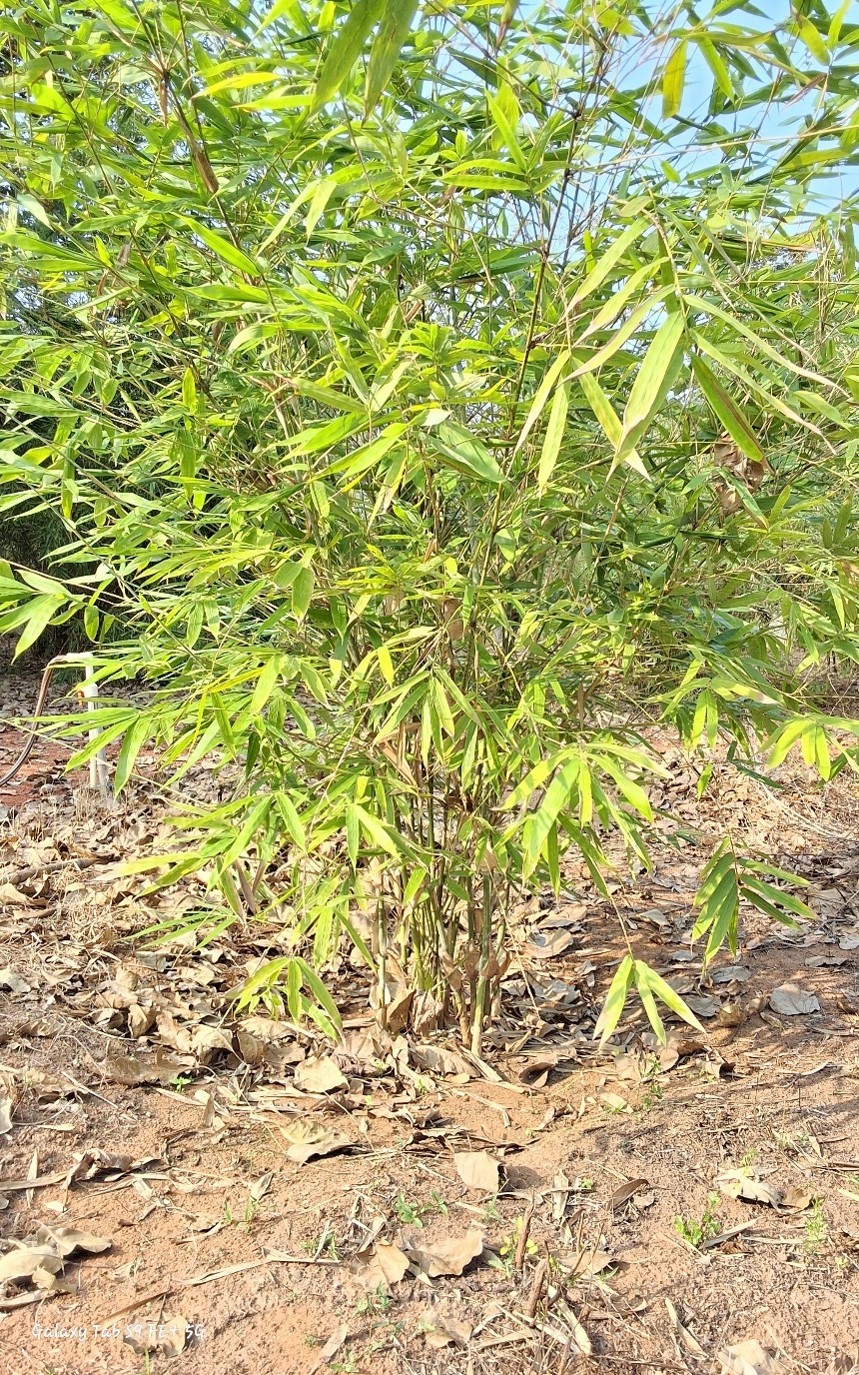Bambusa assamica

Bambusa assamica
Bambusa assamica, commonly referred to as Assamese Bamboo in English and Barjali Bans in Assamese, belongs to the Poaceae family, also known as the grass family. This species is native to the northeastern region of India and is predominantly found in Assam, Meghalaya, Arunachal Pradesh, Nagaland, and Manipur. Its introduction has expanded to Nepal, Bhutan, and Bangladesh. This tropical and subtropical bamboo species thrives at elevations ranging from 500 to 1000 meters in habitats such as tropical forests and subtropical woodlands.
This caespitose, clumping bamboo grows to a height of 15 to 25 meters, with culm diameters ranging between 10 to 18 cm. The culms are deep green in their youth, maturing to a dull yellow as they age. The internodes are 30 to 45 cm in length, and the culm sheaths transition from light green when young to brown and deciduous with age. The adaxial surface of the sheath is smooth and shiny, while the abaxial surface is covered with soft brown hairs. The sheaths are bordered by slightly serrated margins. The broad lanceolate leaves range from 15 to 35 cm in length and 3 to 6 cm in breadth.
Bambusa assamica requires an annual rainfall of 1500 to 3000 mm for optimal growth. It prefers well-drained, heavy-textured soils, thriving in the warm, moist climates of its native range. Ecologically, it plays a significant role in stabilizing soil and preventing erosion, particularly in hilly terrains. It is also an important species for local economies due to its diverse applications.
This species is known for its large panicle inflorescence, which measures 1.2 to 2 cm and features densely packed spikate branches. The empty glumes are ovate and finely nerved, while the flowering glumes are larger and exhibit ciliations along their edges. The stamens are prominently exserted, with pubescent anthers and a densely hairy style. Bambusa assamica flowers infrequently, with a gregarious flowering cycle occurring every 40 to 50 years. Flowering has been recorded in regions such as Arunachal Pradesh, Assam, and Meghalaya during the period from 1985 to 1990. The seeds produced are few and irregular, making vegetative propagation through offsets, seeds, and culm cuttings the preferred methods.
Bambusa assamica is highly valued for its versatile applications. It is extensively used in construction for building houses, bridges, and scaffolding. The strong and durable culms are crafted into furniture, decorative items, and fencing materials. The bamboo shoots are considered a delicacy in local cuisines, while its fibrous structure makes it a sought-after material for the paper and pulp industries. Agricultural communities also utilize this bamboo for making tools and implements, adding to its economic significance in the region.
Listen Audio:
Need assistance? BRTC Faculty